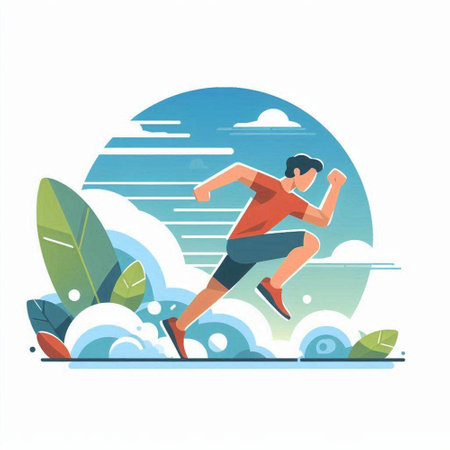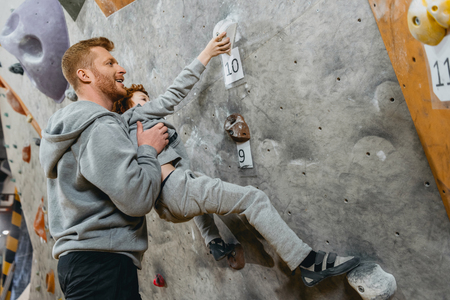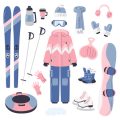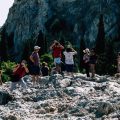1. Why Water Filtration Matters on the Trail
When you’re out hiking in the United States, finding a clean water source isn’t always as simple as it looks. Even a crystal-clear mountain stream can hide invisible dangers. Drinking untreated water can put you at risk for a range of illnesses caused by bacteria, viruses, and parasites that are common in American wilderness areas.
Common Waterborne Pathogens in the U.S.
| Pathogen | Main Sources | Potential Health Effects |
|---|---|---|
| Giardia | Lakes, rivers, streams | Diarrhea, stomach cramps, nausea |
| Cryptosporidium | Surface water, animal waste runoff | Severe diarrhea, dehydration |
| E. coli | Contaminated water near livestock or campsites | Stomach pain, vomiting, fever |
| Noro/Rotavirus | Poorly treated surface water | Vomiting, diarrhea, fever |
The Importance of Water Filtration Systems for Hikers
No matter where you hike—whether it’s the Appalachian Trail, Sierra Nevada, or desert canyons—you can’t judge water safety by appearance alone. Wild animals, human activity, and even upstream storms can introduce harmful microorganisms into streams and lakes. Carrying a water filtration system is the best way to protect yourself from getting sick and to ensure you stay hydrated throughout your adventure.
Leave No Trace Principles and Responsible Hydration
The Leave No Trace principles encourage hikers to minimize their impact on nature. Using a personal water filtration system means you don’t need to carry heavy bottles of pre-packed water or leave behind plastic waste. Plus, it helps keep natural water sources clean for other hikers and wildlife by reducing contamination risks associated with improper disposal of untreated water.
Key Takeaways for Every Hiker:
- Treat all natural water sources before drinking—even if they look clean.
- Choose a filtration system that suits your trail needs and group size.
- Always follow Leave No Trace ethics: pack out all trash and avoid contaminating streams or lakes.
- Stay informed about local water risks before heading out on your next hike.
2. Types of Water Filtration Systems for Hikers
When you’re heading out on the trail, finding a safe water source is key. In the U.S., hikers rely on several main types of water filtration systems. Each has its pros, cons, and best-use scenarios. Let’s break down the major categories so you can figure out what works best for your next adventure.
Pump Filters
Pump filters are classic gear for many American hikers. These systems use a hand pump to force water through a filter, removing bacteria, protozoa, and sometimes even viruses. They’re reliable and work well when you need to draw water from shallow sources like small streams or puddles. However, they do require some elbow grease and can be a bit bulky.
How They Work:
- You place the intake hose in the water source
- Pump the handle to pull water through the filter into your bottle or reservoir
Popular Brands:
- MSR MiniWorks EX
- KATADYN Hiker Pro
Gravity Filters
Gravity filters have become increasingly popular among backpackers who want easy, hands-off filtering for larger groups. You fill a reservoir bag with dirty water, hang it up, and let gravity pull the water through the filter into a clean container below.
How They Work:
- Fill dirty water bag
- Hang it higher than your clean container
- Let gravity do the filtering (no pumping required!)
Popular Brands:
- Platypus GravityWorks
- Sawyer Gravity System
Squeeze Filters
Squeeze filters are lightweight favorites for thru-hikers and ultralight backpackers. You fill a soft pouch with water, screw on the filter, and squeeze the pouch to push clean water into your bottle.
How They Work:
- Fill included pouch with source water
- Screw on the filter
- Squeeze pouch to force water through filter into another container or directly into your mouth
Popular Brands:
- Sawyer Squeeze
- KATADYN BeFree
UV Purifiers
UV purifiers use ultraviolet light to kill bacteria, protozoa, and viruses in clear water. These devices are fast and easy but do require batteries and work best with clear (not cloudy) water.
How They Work:
- Fill your bottle with clear water
- Turn on UV purifier (like a SteriPEN) and stir as directed—usually about 60 seconds per liter
Popular Brands:
- SteriPEN Ultra
- LARQ Bottle PureVis
Chemical Treatments
Chemical treatments (like iodine tablets or chlorine dioxide drops) are a lightweight backup for many American hikers. They’re very portable and kill most pathogens, including viruses—but they can leave an aftertaste and take longer to work than other options.
How They Work:
- Add tablet or liquid to your bottle of untreated water
- Wait recommended time (usually 30 minutes to 4 hours)
- Shake and drink!
Popular Brands:
- Aquamira Drops
- PUR Potable Aqua Tablets
Comparison Table: Water Filtration Systems for Hikers in America
| Type | Main Benefit | Main Drawback | Best For… |
|---|---|---|---|
| Pump Filter | Works in shallow sources; effective filtration; durable | Bigger & heavier; manual effort needed | Solo hikers; variable sources; reliability lovers |
| Gravity Filter | No pumping; great for groups; high output volume | Takes up pack space; setup time needed | Campsites; group trips; base camps |
| Squeeze Filter | Lightweight; fast; simple design | Pouches can wear out; not ideal for large groups | Ultralight hikers; solo trips; thru-hikes |
| UV Purifier | Kills viruses too; quick treatment (for clear water) | Batteries required; doesn’t remove sediment | International travel; clear mountain streams |
| Chemical Treatment | Tiny & affordable backup; kills most pathogens | Taste issues; slower process | Emergency kits; backup option |
Selecting the right filtration system depends on where you’re hiking, how many people are in your group, and your personal preferences for convenience versus weight. Knowing these basics will help you make a solid choice before you hit the trail.

3. Pros and Cons: Which System Fits Your Adventure Style?
Choosing the right water filtration system can make or break your hiking trip, whether you’re trekking the rugged Rockies, winding through the Appalachians, or exploring the Pacific Northwest. Each water filter type has unique strengths and weaknesses. Let’s break them down to help you find the best fit for your next adventure.
Comparing Popular Water Filtration Systems
| System Type | Capacity | Weight | Speed | Maintenance | Best Use Case | Main Drawbacks |
|---|---|---|---|---|---|---|
| Pump Filters | 1-2 liters per use | Medium (10-16 oz) | Fast (1L/min) | Regular cleaning needed, parts may clog | Groups, muddy or silty water (like the Colorado River) | Bulky, requires effort, can break if dropped |
| Squeeze Filters | Depends on bottle size (16oz-1L) | Lightweight (2-4 oz) | Moderate (depends on pressure applied) | Backflushing required often | Solo hikers, thru-hikers on clear streams (Appalachian Trail) | Ineffective with very silty water, slower with age/use |
| Gravity Filters | Larger volumes (2-4L at once) | Medium (8-12 oz) | No pumping—gravity does the work (5-10 min/4L) | Occasional cleaning/backflushing needed | Campsites, groups, basecamps (Yosemite backcountry) | Takes time to set up and wait for flow, not great for quick stops |
| Steripen/UV Purifiers | 0.5-1 liter at a time | Very light (3-5 oz) | Very fast (60-90 sec/L) | Batteries or charging required; bulb replacement after extended use | Cities/travel, crystal-clear mountain streams in the Rockies or Sierra Nevada | Ineffective in cloudy/murky water; battery-dependent; doesn’t remove debris |
| Chemical Treatments (e.g., iodine, chlorine dioxide tabs) |
No limit—just add to container size needed | Tiny packets/bottles (<1 oz) | Takes 30 min–4 hours depending on treatment type and temperature | No equipment to maintain; just carry extra tablets/drops as backup | Ultralight hikers, emergency backup anywhere in the US wilderness | Taste may be unpleasant; slow process; doesn’t remove particulates/sediment; some viruses more resistant to certain chemicals |
Main Takeaways by Environment
- The Rockies: Clear, cold streams are ideal for squeeze filters or UV purifiers. For glacial silt-heavy rivers, pump filters work best.
- The Appalachians: Lots of leaf litter and sediment—squeeze or gravity systems with pre-filters shine here.
- The Desert Southwest: Water sources are scarce and sometimes muddy. Pumps and chemical treatments offer reliability.
- PCT/Long Trails: Thru-hikers love lightweight squeeze filters for speed and simplicity but always pack backup tabs!
Your Hiking Style Matters!
- Solo Hikers: Lightweight squeeze filters or UV pens are popular choices.
- Group Trips: Gravity or pump systems save time and energy when filtering for many people at once.
- Bushcraft/Remote Expeditions: Always have multiple backup methods—including chemical treatments—in case of filter failure.
No single system is perfect everywhere—think about where you’ll be hiking most, how much weight you want to carry, and whether you’re filtering for yourself or a group before you buy.
This should help you narrow down which water filtration system fits your adventure style best across America’s diverse trails.
4. How to Properly Use and Maintain Your Water Filter
Why Proper Water Filter Use Matters on the Trail
Whether you’re thru-hiking the Pacific Crest Trail or enjoying a weekend in the Rockies, your water filter is one of your most important pieces of gear. Clean, safe hydration keeps your energy up and protects against waterborne illness—a must for American backcountry adventures.
Step-by-Step Guide: Using Your Water Filter in the Wild
Common Water Filter Types & Operation Tips
| Filter Type | How to Use | Backcountry Best Practices |
|---|---|---|
| Pump Filters | Attach intake hose to water source, pump handle until reservoir is full. | Pump gently to avoid clogging; pre-filter silty water when possible. |
| Squeeze Filters | Fill soft bottle or bag, attach filter, squeeze clean water into container. | Don’t over-tighten bags; use clear water sources for longer lifespan. |
| Gravity Systems | Hang dirty water bag above clean reservoir, let gravity do the work. | Hang high enough for good flow; keep dirty and clean hoses separate. |
| SteriPens (UV) | Insert UV pen into bottle, activate as directed by manufacturer. | Only use with clear water; carry spare batteries in cold weather. |
| Chemical Treatments* | Add tablets/drops to water and wait recommended time before drinking. | Works best as a backup method or for viral protection; taste may vary. |
*Not technically filters but often used in tandem with other systems for full-spectrum protection.
Pro Tips for Filtering Like an American Backcountry Pro:
- Avoid collecting water from stagnant ponds: Running streams and lakes are safer bets.
- If the water is cloudy, let it settle before filtering: This helps prevent filter clogs and extends filter life.
- Always read and follow your filter’s instructions: Every model has unique quirks—know yours before you hit the trail!
Cleaning Your Water Filter: Keep It Flowing Strong
On-Trail Cleaning Basics
- Pump/Squeeze Filters: Backflush with clean water daily if possible, especially after silty use.
- Gravity Systems: Rinse both dirty and clean reservoirs regularly; backflush at least every few days on long trips.
- SteriPen: Wipe off the lamp after each use and keep it dry between uses.
Quick-Reference Cleaning Table
| Filter Type | Cleaning Method (Trail) |
|---|---|
| Pump/Squeeze/Gravity Filters | Backflush with clean water using included syringe or adapter |
| SteriPen (UV) | Dab lamp dry and store in protective case |
Avoid These Common Mistakes:
- Don’t let your filter freeze overnight: Freezing temps can crack internal fibers and make your filter useless—sleep with it in your sleeping bag if needed!
- Avoid dropping or crushing your filter: Damage isn’t always visible but can compromise safety.
- If in doubt, treat filtered water with chemicals as a backup: Especially if your filter has taken a beating or seems slow-flowing.
Storing Your Filter Between Adventures
- Dismantle and dry thoroughly at home: Prevents mold growth and preserves lifespan. Leave components open-air for at least 48 hours before storing away.
- No sealed containers unless completely dry: Moisture trapped inside can cause mildew and funky smells—nobody wants that surprise on their next trip!
- SteriPen/UV units: Remove batteries to prevent corrosion during long-term storage.
Treating your filter right means you’ll have reliable hydration on every adventure—whether you’re hiking in Appalachia or camping out West. Master these skills now so you can focus on the miles ahead!
5. Top Picks: Favorite Filtration Systems Among U.S. Hikers
When it comes to water filtration, American hikers have strong preferences based on where theyre hiking and how long they plan to be out. Here are some of the most trusted water filtration systems, with quick notes about why hikers love them for different regions and adventures.
Sawyer Squeeze
The Sawyer Squeeze is a longtime favorite for its light weight, versatility, and reliability. It’s especially popular among thru-hikers on trails like the Pacific Crest Trail (PCT) and Appalachian Trail (AT).
- Best For: Long-distance backpacking, solo trips
- Strengths: Super lightweight, easy to use with various bottles and pouches, durable filter
KATADYN BeFree
The Katadyn BeFree stands out for its fast flow rate and simple squeeze design. Hikers in the Rockies or those who want a grab-and-go solution often choose this model.
- Best For: Day hikes, fastpacking, high-mountain streams
- Strengths: Quick to filter, easy to clean, very compact
Lifestraw Personal Water Filter
Lifestraw is famous for its simplicity and affordability. Many hikers keep one as a backup in their pack, especially when traveling through regions with unpredictable water sources.
- Best For: Emergency use, minimalist hikers
- Strengths: No setup required, ultralight, great for emergencies or bug-out bags
Steripen Ultra UV Purifier
If you’re trekking in areas with questionable bacteria or viruses—like the Southwest or international destinations—the Steripen Ultra is a go-to for many American adventurers.
- Best For: International travel, desert hikes where water clarity isn’t guaranteed
- Strengths: Destroys viruses as well as bacteria and protozoa, USB rechargeable, quick purification
Quick Comparison Table: Popular Filters by Region & Trip Length
| Brand/Model | Main Strengths | Best Regions/Terrain | Trip Type |
|---|---|---|---|
| Sawyer Squeeze | Lightweight, reliable, field-cleanable | PCT, AT, Sierra Nevada | Thru-hikes, multi-day trips |
| KATADYN BeFree | Fast flow rate, compact design | Rockies, Cascades, short trips anywhere | Day hikes, trail runs, overnighters |
| Lifestraw Personal Filter | No setup needed, emergency-ready | Southeast forests, Midwest lakes & rivers | Backup/emergency use, ultralight hikes |
| Steripen Ultra UV Purifier | Destroys viruses/bacteria/protozoa; rechargeable | Southeast swamps/deserts; international travel | Trekking abroad, high-risk water areas |
A Few More Noteworthy Mentions:
- Pump Filters (MSR MiniWorks EX): Great for group camping and silty water sources like those found in the Grand Canyon.
- Chemical Tablets (AquaMira): A lightweight backup that works everywhere but requires wait time before drinking.
The right system really depends on where you’re headed and how you hike. Stick with what matches your adventure style and the region’s specific needs!


